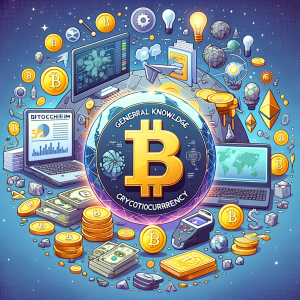Crypto Basic Terms
Basic Crypto Terms – #TOGRP “tired of getting rug pulled”
There are some things you could know about cryptocurrency, and some things you should know. Here is a list of some common cryptocurrency terms to add to your vocabulary if you hope to survive web 3.0.
- Address
Cryptocurrency coins are identified on the blockchain by unique addresses. You can think about the blockchain as a GPS and your cryptocurrency address as its targeted mailing address. Without an address, no coin is stored; the blockchain can’t confirm nor verify its existence. So, without a proper wallet address, you can’t own a coin.
Every time a transaction is confirmed, the value of your wallet is updated based on your address. Addresses may appear in different formats depending on the currency, but most look something like this: 17VZNX1SN5NtKa8UQFxwQbFeFc3iqRYhem (this is a fictional address, I respect your intelligence… but please do not send crypto here or use this address for any other purpose :()
If you are confused by all this, the answer is yes, you shouldn’t have sent Cash to the hot dog stand guy, hoping he was gunna send you Bitcoin.
- Altcoins
Altcoins = any crypto coins not named Bitcoin, not sure it is still as true this year as was every other year !?
Okay, don’t know much about Bitcoin? Here’s a good Bitcoin intro and refresher.
Anyway, since Bitcoin launched in 2011, thousands of altcoins have emerged. Some coins disrupt markets and shape industry trends, while some coins are hot garbage ridden with financial crime. Most of the popular altcoins serve some real-world function. Sorry, Dogecoin.
Ethereum is currently the world’s largest altcoin, but look out for?? Cardano ADA will be soon be, in My humble opinion.
- Blockchain
‘Blockchain’ is one of those buzzwords. I still don’t think half the people who use it really understand what it is. Back in 2016 when I first learned about cryptocurrency, I associated the word blockchain with some strange blackhat Russian operation, In a basement drinking vodca hacking up a storm:) Don’t ask.
A blockchain is a digital ledger composed of all the transactions ever made in a particular cryptocurrency. These transactions are made up of ‘blocks’. When a block reaches its capacity, a new block is created and so forth. Some blockchains have a limited number of blocks by design, whereas others have an infinite market cap.
A blockchain like Bitcoin is completely public, so everyone can see every transaction. It’s funny because most folks associate Bitcoin with the early days, where it was a breeding ground for illicit drugs and firearm deals. But the more Bitcoin goes mainstream, the easier it will be to trace a transaction to a particular individual. Especially on centralized trading platforms that use KYC measures.
A blockchain like Monero, however, is completely private. It is impossible to link a transaction to any address. That is one of its core features, and attracts users interested in making completely anonymous transactions.
On a blockchain, there is no central location where the ledger is stored. Rather, it is copied repeatedly on different computers and servers around the world. Thus, it is considered to be decentralized.
- Decentralized apps (dApps)
Speaking of decentralized, you should probably know about dApps. These are open-source applications built on a blockchain intended for real-world use. Ethereum is considered the mother of dApps. Ethereum was founded on the idea of enabling developers to create new applications on top of their blockchain, me personally like Binance BNB
BSC network, they catching up very fast , Cardano now just launching dapps with smart contract this week, keen to see how ADA ecosystem grows.
There is no one-size-fits-all definition for dApps. But as BlockGeeks puts it, all dApps have a few things in common: they are open-source, decentralized, incentivized (validators need to be rewarded with cryptographic tokens) and have a protocol (the community agrees on a cryptographic algorithm that can be widely adopted).
Some ETH-based and BSC-based dApps are now worth millions in market cap, and in theory, a dApp can become as valuable as any other company or product.
- Decentralized finance (DeFi)
DeFi is a blanket term for decentralized alternatives to traditional (centralized) finance. DeFi includes banking, money management, payment processing, insurance, etc. DeFi products and services enable democratized access to a historically exclusive industry.
Start paying attention, and you’ll see this term thrown around on Twitter. You should probably know what it stands for.
- Digital Currency
Digital currency… so like cryptocurrency, right? Not exactly.
A digital currency can be linked to fiat currency too. In fact, most major nations have a digital currency tied to their fiat right now, including the US and China.
A digital currency depends on trust—you rely on multiple institutions to carry out a transaction. Crypto, on the other hand, is trustless, you can verify transactions and records of the address you are transacting with in real-time.
In other words, you can’t see the transaction history of your counterparty and third party payment processor when you go to sell a pair of shoes on StockX. You trust Paypal (and your bank) to safely and securely carry out that transaction.
- Distributed Ledger Technology (DLT)
We touched on the concept behind public ledgers—that place you go to view all transactions made on a blockchain. DLT refers to a distributed ledger, another term for blockchain technology. When you see DLT, think blockchain. Take note of that. - Fiat
Fiat currency is 1) government-backed and 2) not backed by any commodity (like gold). Those green US dollars in your wallet? That’s fiat currency. The value of US dollars rely solely on our collective faith in the institution of the United States government. If the US crumbles, so does your fiat. - Gas
When you make a transaction on the blockchain, you have to pay a fee. That fee is called a gas price. You are basically paying a miner to go out and receive crypto for you. You can choose to pay higher fees for faster transaction speeds, or lower fees for slower transaction fees.
Gas prices are one of the biggest challenges facing cryptocurrency markets. If we find a better way to drive down energy costs for transactions, crypto will become more ubiquitous.
- Initial Coin Offering
Comparable to the traditional Initial Public Offering (IPO), an ICO is a new method for projects and startups to secure funding. Pretty much anyone can participate in an ICO. More importantly, it’s about finding the right fit for investors and founders, according to Jonathan Chester, Founder & President of ICO consulting firm Inwage. - Know Your Customer (KYC)
KYC is a compliance term. It will probably come up if you take a more mainstream approach to purchasing crypto. Major platforms like eToro and Coinbase require KYC as part of their onboarding process. KYC refers to “knowing your customer”. Regulators require identity background checks for new banking clients as a means to deter money laundering and terrorist funding. The financial regulation of crypto is here to stay, so expect to see that acronym more and more as governments scramble to tie blockchain transactions to citizens. - Mining
Mining is the process of verifying new transactions on a blockchain. When someone donates computer power to a miner to complete an encryption challenge, that donor is then awarded crypto. - Non-fungible tokens (NFTs)
If you’ve been following ONE37PM at all these past two months, you’ve probably heard about NFTS. Non-fungible tokens enable virtual transactions between collectibles like art, music and trading cards using smart contracts. For more info, check out this comprehensive guide on NFTs. - Private Key
This is the super-important string of numbers and letters you should not share with anyone. If someone is able to access your private key, you can lose your funds in a matter of seconds. This key is necessary to verify transactions when selling or withdrawing your crypto.
Don’t share….
The following terms are a little technical but important for people who want to understand how different blockchains function. - Proof of Authority (PoA)
In a blockchain operated under Proof of Authority (PoA), a few specific nodes are granted the right (or authority) to approve a miner’s ability to create a block. This is a faster alternative to the proof-of-work model, but more centralized. - Proof of Work (PoW)
Proof of Work is a more traditional method to award miners for their effort. It requires miners to show their effort by tying a variable to the process of hashing a transaction. A hashed block proves work was completed and awards the miner. This takes up a lot of energy. - Proof of Stake (PoS)
Proof of Stake allows a person to validate or mine cryptocurrency based on the number of coins he or she owns. Under this model, the idea is that a miner will be less likely to attack a network if they have a stake in the game. - Public Key
A public key is a string of characters used to purchase cryptocurrency. If a content creator, for example, wants to receive cryptocurrency instead of fiat for his or her content, they can list their public key. Fans can easily send cryptocurrency using the content creator’s public key. - Public Ledger
Each blockchain has its own ledger. Here’s a link to Bitcoin’s public ledger. This is the place where you can view every transaction ever made on a blockchain, given that it’s public. Some coins distinguish themselves by operating on an anonymous or private ledger. - Satoshi Nakamoto
Satoshi Nakamoto is the individual, or group of individuals, credited with founding the world’s first cryptocurrency, Bitcoin. The founder of Bitcoin remains completely anonymous.
If you see the term ‘satoshis’ thrown around, that refers to a fractional unit of Bitcoin. You can transact with satoshis. I once heard some lady on CNBC who was bearish on Bitcoin because “the average consumer doesn’t want to make a purchase with 0.0003 of something”. She clearly does not understand how Bitcoin works. Facepalm twice! :(()
- Seed phrase
The seed is the foundation of your wallet’s digital existence. A recovery seed is a series of twelve, sometimes sixteen words that can be used to access your wallet if something goes wrong and you lose it.
Your recovery seed is the equivalent of asking twelve security questions for a forgotten password. But compromising these security phrases will cost you a lotta dough, a lot more than losing a Facebook account. Once your wallet is compromised, your funds are gone forever. Please don’t share this with anyone unless you enjoy losing money.
“Feel free to inbox me with your seed words ” @PissOff
- Segregated Witness (SEGWIT)
Another tech term, SEGWIT refers to the process that separates digital signature data from transaction data. This allows more transactions to fit on one block, increasing the speed of transactions. Put simply, it’s a good value-add for blockchains. - Smart Contracts
A core feature of the Ethereum, Binance and now Cardano woohoo we made it ADA – blockchain and NFTs, smart contracts are just your typical boring legal contracts… only they’re written in computer code.
Smart contracts hold multiple parties accountable for something, just like a normal legal contract, but it instructs each party through code rather than spoken language. Both parties can see and approve of the programming before accepting a contract’s terms, making it completely transparent.
- Wallet
Seems simple enough. I know what a wallet is. But a digital wallet can be a little bit trickier to understand.
A crypto wallet is the place where your coins are stored. Your wallet must contain seeds, keys, and addresses to function properly. There are several types of wallets, such as hardware and software. If you use a mobile app to store your crypto, that is an example of a software wallet. I personally use a hardware wallet to store my crypto.
Hardware wallets require a bit more knowledge but provide more protection for users than software wallets. Why? Well, if someone hacked into Coinbase (they have loopholes), then I can lose all of my crypto. Unless the recovery seed physically stored in my house is somehow compromised by strangers, it is virtually impossible for someone to hack into my hardware wallet.
You can use please like YouTube for videos on how 2″s again don’t tell anyone your passwords. If they ask they are thrives and scamers.
- Whale
A whale is the term used for the most valuable Bitcoin addresses. There are about 3000 Bitcoin whale addresses, and only three own more than 100,000 BTC, according to BitcoinPlay, may well be more buy now!
When you think of Bitcoin whales, think of folks like Tim Draper, Barry Silbert and the Winklevoss twins. These folks have been advocating for Bitcoin since the early 2010s
A whale is also a term frequently used for a large bad holder of any token or coin.
Pre-selling is a practice performed by some crypto projects ahead of an initial coin offering, in which tokens are sold to interested parties at a certain price. … Developers may also perform a pre-sale in order to create buzz ahead of the ICO, hoping for a price surge when the asset goes public.
Due diligence is an investigation, audit, or review performed to confirm facts or details of a matter under consideration. In the financial world, due diligence requires an examination of financial records before entering into a proposed transaction with another party.
26. AML (Anti-Money Laundering) Set of international regulatory standards applied to restrict organizational & individual money laundering activities.
27.API (Application Programming Interface) An agreed upon set of computing interfaces that defines interactions between multiple software intermediaries. For example, how requests should be created, utilized, and formatted.
28.Confirmation/Block Confirmation :A network verification of a blockchain transaction. Varying on the type of blockchain, the more confirmations a transaction has, the less susceptible it is to being reversed or double spent.
29.Consensus A process that often utilizes a trustless voting process to ensure proposed data (blocks) are adhering to distributed ledger (or blockchain) network rules for inclusion.
30.Double Spend A malicious act in replicating a previously executed transaction.
31.Gwei A small denomination of ETH. 1 ETH = 1,000,000,000 Gwei.
DYOR
What is DYOR?
Do Your Own Research (DYOR) is regarded as one of the most important aspects of being a cryptocurrency investor.
The term first became popular during a wave of ICO projects that flooded into the cryptocurrency space between 2016 and 2018. Many investors were left duped or out of pocket by a host of scams entering the market as potential get-rich-quick crowdfunding schemes.
As a way of combatting fraud, people were urged to ‘DYOR’ and investigate any potential investment fully before committing money to any project.
The phrase has now permeated into popular culture, and is widely used to encourage amateur investors in any arena to navigate a minefield of misinformation.
It is also often used as a kind of disclaimer by some cryptocurrency figures when they post about projects or analysis on social media platforms.
Over the coming weeks/months, we will build on this list and add new terms.
Always do your own Research DYOR !?
Never share your seed / password phrases




